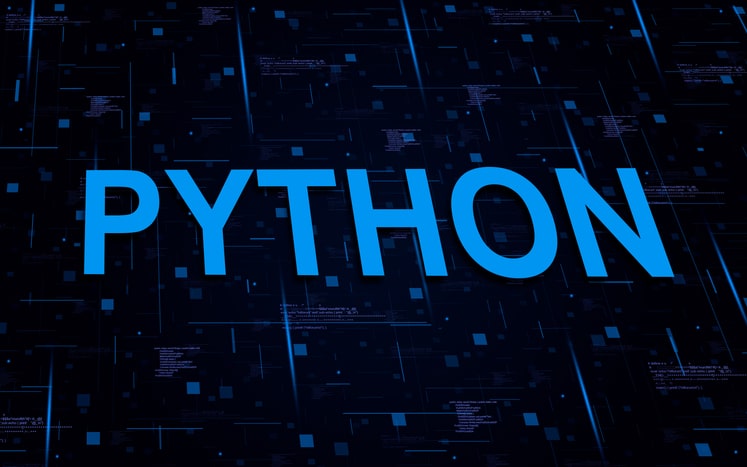Introduction
Welcome to a journey of simplicity and power in web development with React. React, a JavaScript library created by Facebook has taken the world of web development by storm. Its ease of use, flexibility, and efficiency make it a go-to choice for developers worldwide.
React.js is not just any JavaScript library; it’s a powerful tool designed to streamline the process of building complex, interactive, and robust user interfaces (UI). Built on JavaScript, React leverages the dynamism of the language while introducing an architecture that enables reusability, separation of concerns, and an excellent user experience.
What sets React apart from other JavaScript libraries is its component-based architecture. This means that UIs in React are divided into isolated pieces, or components, that manage their own state. These components can be reused across different parts of the application, making the development process more efficient and your code cleaner and more maintainable.
Moreover, React.js introduces a virtual DOM that optimizes rendering and boosts the performance of web applications. This allows developers to build large-scale applications that are quick, responsive, and give a seamless user experience.
Whether you’re a novice getting your feet wet in the world of web development or a seasoned developer looking to dive into the depths of React.js, this guide will provide a comprehensive overview of React and its capabilities. We will explore the fundamentals, dive into creating your own projects, and cover best practices to ensure you are getting the most out of this incredible tool.
In this guide, we will make React easy for you, helping you create powerful projects with ease and efficiency. So let’s dive into the world of React.js and start our journey towards mastering web development with React.
Understanding the Basics of React
The surge of digitalization and the advent of complex web applications have called for more efficient, robust, and scalable solutions in web development. Amidst the sea of frameworks and libraries, React.js has emerged as a modern, popular choice that is changing the game of web application development.
React.js, first introduced by Facebook in 2013, has since garnered an enormous community of developers and companies, big and small. It powers some of the most popular websites you know today, including Instagram, Airbnb, Netflix, and WhatsApp. Its importance in today’s web development landscape cannot be overstated. What is the reason for its popularity and significance? It’s in the name – React.js allows developers to react quickly and efficiently to changes, creating dynamic, fast, and user-friendly web applications.
At the core of React.js is its Virtual DOM (Document Object Model), a revolutionary concept that sets it apart from other JavaScript libraries. In traditional web development, any change in the data structure would lead to the entire DOM being updated, which was a slow and inefficient process. However, the Virtual DOM in React.js optimizes this process by only updating parts of the DOM that need to change when data is updated. This makes React.js incredibly fast and efficient.
React.js also introduces JSX (JavaScript XML), a syntax extension for JavaScript. JSX may look like HTML, but it has the power of JavaScript. With JSX, developers can write HTML structures in the same file that contains JavaScript code, making the code easier to understand and maintain.
React.js is built around components, reusable and independent bits of code that serve as the building blocks of a React application. Each component in React has its own structure, logic, and behavior and can be reused throughout the application, reducing the amount of code you need to write and making your application more readable and maintainable.
Props (short for properties) in React.js are used to pass data from one component to another as arguments. State, on the other hand, is a built-in object in a React component that stores property values that belong to the component. When the state object changes, the component re-renders.
These are just the basics of React.js, but understanding them gives you a firm foundation to build upon as you start to create more complex and powerful web applications. React.js is more than a library; it’s a comprehensive tool that, once mastered, can empower you to create amazing things on the web.
Getting Started With React
If you’re eager to get your hands dirty and start your journey with React, the first step is setting up your development environment. A well-prepared environment lays the foundation for smooth, trouble-free coding.
You’ll need Node.js and npm (Node Package Manager) installed on your computer before you can dive into React. Node.js is a JavaScript runtime that allows you to run JavaScript on your server, while npm is a package manager for Node.js, allowing you to install and manage packages that your project depends on.
You can download Node.js and npm from the official Node.js website. Installation is straightforward: simply download the installer for your operating system and follow the prompts. After installation, you can confirm that Node.js and npm were installed correctly by running the following commands in your terminal:
node -v npm -v
Each command should return a version number, confirming the successful installation of Node.js and npm, respectively.
Yarn is another package manager that you might choose to use instead of npm. It was developed by Facebook and is known for its speed and efficiency. You can install Yarn globally through npm by running `npm install -g yarn` in your terminal.
With Node.js, npm (or Yarn), and a text editor of your choice (Visual Studio Code, Sublime Text, or Atom) installed, you’re ready to create your first React application.
To create a new React application, you can use Create React App, a command-line tool developed by Facebook. It sets up a new React application with a single command, taking care of all the configuration for you. Here’s the command to create a new application:
npx create-react-app my-app
Replace “my-app” with the name of your project. Once the command finishes running, you will have a new directory with the same name as your project. Inside, you’ll find a simple, ready-to-use React application.
To start the application, navigate into the project directory using `cd my-app` and run `npm start` or `yarn start.` This will start the development server, and your brand-new React application will be available at `http://localhost:3000`.
Congratulations! You’ve just created your first React application. Now it’s time to explore the magic of React and make your application come to life.
Diving Deeper into React
Now that we’ve created our first React application let’s delve into some fundamental concepts that will help us better understand the dynamics of React.js and utilize its full potential.
Firstly, JSX – an HTML-like syntax that can coexist with JavaScript – is a crucial part of React. JSX simplifies the process of writing JavaScript for HTML, thus creating a more efficient and cleaner way of defining component layouts.
Components are the building blocks of any React application. They are reusable pieces of code that can range from simple buttons to more complex structures like a complete webpage. Components improve the maintainability of the application and help keep your code DRY (Don’t Repeat Yourself).
Props, short for properties, are how components talk to each other. Props are passed down from parent components to child components and are read-only. This means a child component can only read the props passed to it but cannot change them.
State, unlike props, is private and fully controlled by the component. The state object is where you store property values that belong to the component. When the state changes, the component re-renders, and this allows for dynamic and interactive components.
Lifecycle methods are special methods that automatically get called as your component achieves certain milestones. These milestones include being created, added to the DOM, updated, or removed from the DOM.
React Hooks, introduced in React 16.8, is a groundbreaking feature that allows you to use state and other React features without having to write a class. Hooks let you organize the logic inside a component into reusable isolated units.
The most frequently used hooks are useState, useEffect, and useContext. useState allows you to add React state to functional components. useEffect lets you perform side effects in function components, such as data fetching, subscriptions, or manual DOM manipulations. useContext lets you share values like these between components without having to pass props through every level of the tree.
By understanding these fundamental React concepts, you are equipping yourself with the tools necessary to create robust and dynamic web applications. Remember, mastery comes with practice, so don’t be afraid to dive in and get your hands dirty with some real-world React coding.
Five Innovative React Project Ideas
Building projects is one of the most effective ways to learn and solidify your knowledge of React.js. In this section, we will discuss five innovative React project ideas that cover a range of complexities and functionalities.
Project 1: To-Do List Application
A To-Do List Application is a great starting point for beginners. This project will familiarize you with the basics of React, such as creating components, managing state, and handling events. To make the app more complex, you could add features like deadlines, categories, and a completed task view.
Project 2: Weather App
Building a Weather App will introduce you to API integration. You could use the OpenWeatherMap API to fetch weather data. This project will allow you to understand the asynchronous nature of fetching data, handling responses, and updating the state based on the data received. You can make it more complex by adding search functionality to look up the weather for different cities or a feature to switch between Celsius and Fahrenheit.
Project 3: E-commerce Store
An E-commerce Store is a perfect project to understand the complexity and real-world applications of React.js. This project requires several components, such as product listing, product detail, shopping cart, and checkout. You’ll need to manage the state across multiple components, validate user input, handle forms, and maybe even use routing to navigate through different views. You could use a service like Commerce.js or create a mock API using json-server for the backend.
Project 4: Real-time Chat Application
A Real-time Chat Application is a step-up in terms of complexity. This project would involve real-time communication, for which you could use Firebase or Socket.IO. You will need to authenticate users, sync data in real time, and manage multiple simultaneous conversations. This project is excellent for understanding how to handle real-time data in React.
Project 5: Movie Search App
Building a Movie Search App is a fun project that involves working with an API, like the OMDB API. Users should be able to search for movies and view detailed information about each movie. This project will reinforce your knowledge of API integration, handling responses, and updating the state in React.
Remember, the key to mastering React.js is to build, build, and build! So, don’t hesitate to pick a project that interests you and start coding. As you work through these projects, you’ll not only solidify your understanding of React.js but also have some impressive projects to showcase in your web development portfolio.
Best Practices in React Development
As with any technology, understanding and applying best practices in React development is crucial to writing efficient, readable, and maintainable code. Here are some of the key best practices you should follow:
Code Splitting: React applications can grow large and thus have longer load times. To combat this, React offers a built-in feature for code splitting. This feature allows you to split your code into smaller chunks which you can then load on demand. This improves the initial load time of your application, enhancing the overall user experience.
Managing State: Effective state management is key to scalable React applications. useState and Redux are common ways to manage the state in React. useState is perfect for managing local states, while Redux is suitable for more complex applications with global states.
Error Handling: Errors are inevitable in any application. In React, you can handle errors using Error Boundaries – a React component that catches JavaScript errors in their child component tree, logs those errors and displays a fallback UI.
Performance Optimization: Optimizing performance ensures your application runs smoothly and provides the best user experience. Some techniques include using PureComponent, memoizing your components, and using the production build during deployment.
Remember, the best practices aren’t rules but guidelines. They can help you avoid potential problems and improve the quality of your code. As you continue developing with React, these best practices will become second nature, leading to more robust and efficient applications.
Exploring the React Ecosystem
The beauty of React lies not only in its core features but also in the extensive ecosystem of libraries and tools that complement it. Knowing what’s available in this ecosystem can significantly speed up your development process and extend your application’s capabilities.
React Router is one such tool. It’s a standard routing library for React, allowing you to add new views and navigate between them using URLs. With React Router, you can create single-page applications with navigation that feels like a multi-page application.
Redux is a popular state management library. For large-scale applications with a global state, Redux provides a predictable state container, enabling you to write applications that behave consistently across different environments.
Next.js is a React framework for server-side rendering. It simplifies the process of building static and dynamic websites and provides features such as pre-rendering, automatic code splitting, and routing out of the box.
Gatsby is another powerful static site generator for React. It allows you to build blazing-fast websites and applications, fetching data from various sources like APIs, databases, or the file system.
Exploring the React ecosystem is an ongoing journey. As you gain more experience with React, you’ll discover more libraries and tools that can help you create robust, high-performing applications.
Conclusion
In this comprehensive guide, we’ve journeyed through the essential aspects of React.js – understanding its basics, setting up the development environment, diving deeper into key concepts, exploring practical project ideas, implementing best practices, and familiarizing ourselves with the rich React ecosystem.
As an open-source JavaScript library with a strong community and continuous development, the future of React is promising. It’s time now to utilize this knowledge and create your own React projects, contributing to the dynamic world of web development. The learning doesn’t stop here, so keep exploring, keep coding, and continue your path to mastering React.js – the tool that’s reshaping the future of web development.









